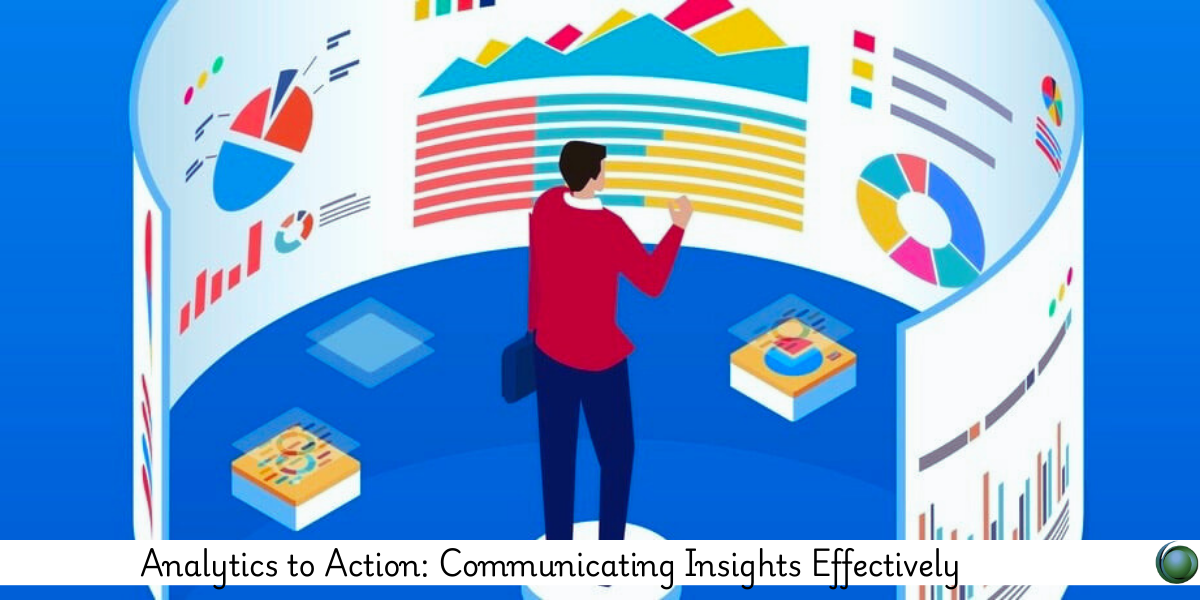Description
Introduction
In today’s data-driven world, collecting and analyzing data is just the beginning. The real challenge lies in transforming analytics into actionable insights that drive business decisions. “Analytics to Action: Communicating Insights Effectively” is designed to teach you how to bridge the gap between complex data analysis and real-world action. This course will help you learn how to present your findings in a way that engages stakeholders, simplifies complex insights, and encourages data-driven decision-making.
Prerequisites
-
Familiarity with basic data analysis tools (Excel, Power BI, Tableau, etc.)
-
Understanding of key data analytics concepts
-
Interest in enhancing communication and presentation skills
-
No prior experience in advanced analytics or data visualization required
Table of Contents
1. The Importance of Actionable Insights
1.1 Defining Actionable Insights: What Makes Data Useful?
1.2 The Role of Communication in Translating Data to Action
1.3 How Analytics Drives Business Outcomes
1.4 Challenges in Converting Data into Action
1.5 The Power of Storytelling in Data Communication
2. Understanding Your Audience
2.1 Identifying Stakeholders and Their Needs
2.2 Tailoring Insights for Different Audiences
2.3 Balancing Technical Details with Business Context
2.4 Making Data Relatable: Connecting the Dots for Your Audience
2.5 Building Empathy Through Data Communication
3. Framing the Message: Structuring Data for Impact
3.1 Establishing a Clear Objective for Your Communication
3.2 Structuring Your Insights: What to Include and What to Exclude
3.3 Creating a Narrative: The Beginning, Middle, and End
3.4 Using Context to Make Your Insights More Relevant
3.5 Simplifying Complex Data for Easy Understanding
4. Data Visualization Techniques for Communication
4.1 Choosing the Right Visualization for Your Data
4.2 Principles of Effective Data Visualization
4.3 Using Charts, Graphs, and Dashboards to Simplify Insights
4.4 Common Visualization Pitfalls to Avoid
4.5 Enhancing Your Visual Storytelling
5. Presenting Analytics: Engaging Stakeholders
5.1 How to Deliver Insights Effectively in Meetings and Presentations
5.2 Tips for Making Your Presentations Engaging and Interactive
5.3 Managing Different Personality Types in Data Presentations
5.4 Using Visual Aids to Strengthen Your Message
5.5 Best Practices for Speaking to Non-technical Audiences
6. Converting Insights into Actionable Strategies
6.1 Framing Data Insights as Actionable Business Recommendations
6.2 Creating a Call to Action Based on Data
6.3 Prioritizing Actions and Setting Measurable Goals
6.4 Communicating the Impact of Actions and Predictions
6.5 Aligning Data Insights with Business Objectives
7. Tools for Communicating Data Insights
7.1 Overview of Tools for Data Visualization and Presentation (Power BI, Tableau, Excel, etc.)
7.2 Integrating Analytics with Communication Tools (Storytelling Software, Interactive Dashboards)
7.3 Using Real-Time Data for Immediate Action
7.4 Using Collaborative Platforms for Better Communication of Insights
7.5 Best Practices for Automation in Data Communication
8. Continuous Improvement: Analyzing the Impact of Your Insights
8.1 Measuring the Effectiveness of Your Data Communication
8.2 Gathering Feedback and Iterating on Your Presentations
8.3 Key Metrics to Track Success of Data-driven Actions
8.4 Learning from Mistakes: Improving Your Approach Over Time
8.5 Building a Data-Driven Culture for Ongoing Impact
9. Case Studies: Real-World Applications
9.1 Business Case Study: Converting Market Data into Actionable Sales Strategies
9.2 Healthcare Case Study: Turning Patient Data into Service Improvement Plans
9.3 Financial Case Study: Using Data to Optimize Investment Strategies
9.4 Retail Case Study: Using Consumer Insights to Drive Product Decisions
9.5 Lessons Learned: What Made These Insights Effective
10. The Future of Analytics Communication
10.1 Trends in Data Analytics and Visualization
10.2 How AI and Automation Are Shaping the Future of Insights Communication
10.3 The Role of Data Literacy in Organizational Success
10.4 Preparing for New Forms of Analytics (Predictive, Prescriptive, etc.)
10.5 Continuing Education: Staying Updated on the Latest Tools and Techniques
Successfully communicating insights is a crucial skill for any data professional. The ability to translate complex data into actionable recommendations that drive decision-making and business results is invaluable. By mastering the strategies and tools outlined in this course, you’ll be equipped to present data in a way that not only informs but inspires action. Ultimately, data-driven decision-making is at the heart of successful businesses, and with the right communication techniques, you can ensure that your insights make a lasting impact.







Reviews
There are no reviews yet.